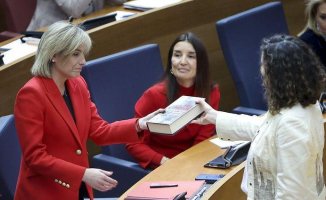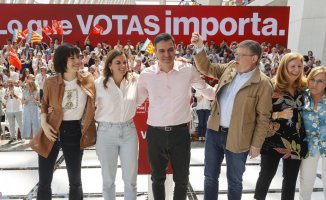When he was a child, together with his brother they opened the family appliances. The vacuum cleaner, the toaster, the blender... They wanted to see what was inside, how it worked. Then they tried to assemble them and there were leftover pieces, but neither the curiosity nor the playful spirit of the Mexican Damián Ortega (1967) ever disappeared and twenty years ago he achieved global fame, including the Venice Biennale, doing the same thing: disassembling all the pieces of a Volkswagen beetle just like the one he was driving and arranging them in the air as if the popular German car had exploded in a great big bang. An explosion in which all the pieces are suspended, frozen in the middle of the showroom, so that each element of the car, tire, tube, rim, trim, fender, headlight, seems to have been separating in slow motion from the previous one. Leaving bare not only the components, but all the relationships between them.
This spectacular work by Ortega, entitled Cosmic thing, now opens the great expanded vision exhibition at the Botín Center in Santander. An exhibition curated by Vicente Todolí, former director of the Tate, and which brings together nine of Ortega's large suspended pieces, big bangs that disintegrate chairs so that an almost spiritual three-dimensional cross appears or that show in a fascinating way the structure of a drop of water. Hence, says Todolí, the title of Expanded Vision, because "there is always an ironic element that presides over his work, there is humour, it questions our certainties, we discover things that force us to think differently, to see beyond".
"The pieces speak of the relationship between the individual and the group, and how things are made up by being linked to each other, constituting a team, a system," explains Ortega, who at times with his goatee, his glasses, the periodic mischievous smile and an intellectual air just slightly lost within himself recalls an illustrious exile in his country, Trotsky. And that he tells about his most famous work that “Cosmic thin g was an exercise to understand an everyday object of mine, which he had received as something that is used without questioning it. It was like a deconstruction of the car to recognize it. And I liked the idea that despite the function it had was a communication system, I liked that a unit was made from a multiplicity of material elements and that each element had a dialogue with another from assemblies, from chemical, physical and mechanical communication. It was a revelation. In a natural history museum, you walk in and there's a tyrannosaurus and you see the skeleton extended to the ceiling and the tail filling the halls. This is an industrial or post-industrial dinosaur. In fact, this car was discontinued and became a fossil”, he laughs.
In the exhibition there are big bangs of a volcanic explosion or hundreds of tools - axes, saws, pruning shears, hammers, hoes, wrenches, shovels - with which we shape reality. In fact, the viewer can stand in the center of the cloud of tools and look, remembering that we literally see the world through them. He also dissects the planet in Journey to the Center of the Earth, a large sphere made up of stones of different materials as if they were the layers of our world.
Ortega, who started out as a political cartoonist, is happy to point out that there is a piece created with her mother's calligraphy that she will see for the first time, Harvest. A room in which large steel construction bars have been twisted, now converted almost into black snakes suspended from the ceiling so that the spotlights located above each of them project a letter of the alphabet onto the floor as her mother writes them. “My mother has a French school calligraphy, machete, in the old way, the one with the letter with blood enters, a subtle, very fine calligraphy, which contrasts with the coarseness of the material used. The piece has to do with the idea of seeing and questioning what the space of reality is: in it is the physical, sculptural part, with weight, rigidity, but also that of memory, interpretation, reading of a work” .













